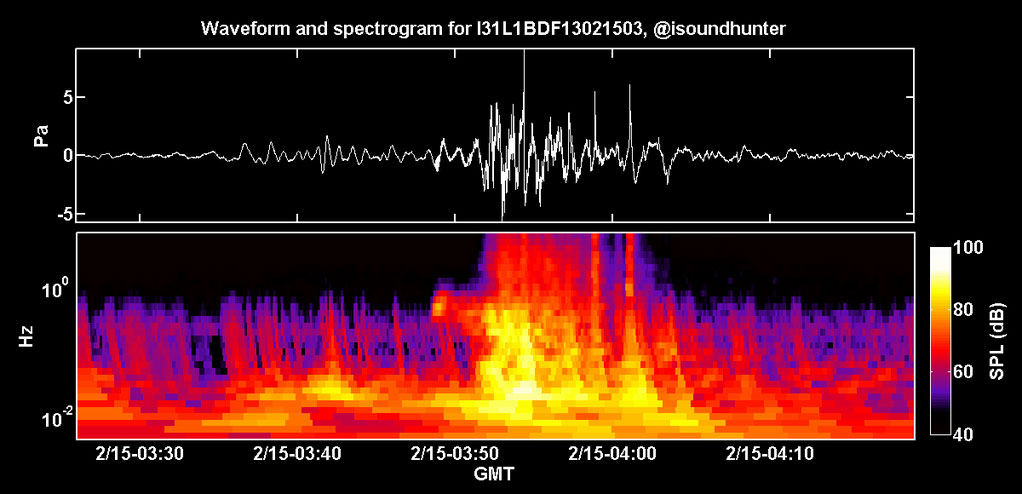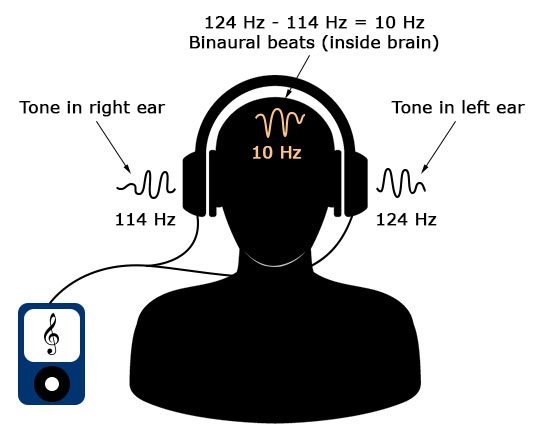What Is Infrasound? – A Quick Guide with George Fotopolous
by Dave Fox


First, what is infrasound to your understanding?
This comes especially handy in the case of church organs, because the really deep frequencies cause a feeling of awe and spookiness, which is really useful when you have to convince everyone that god himself is present in the room.
How does infrasound factor into your music production work?
First of all, let me tell you beforehand that we’ll use the term in a very loose way, including not only the frequencies from 0 to 20hZ (the actual definition of infrasound) but also the ones from 20 to 40hZ, since they are at the limits of the audible range and many people cannot hear them. Given this fact, it is normal that most producers would leave these frequencies outside their toolbox and not use them at all. Unless you are into techno or you work with binaural beats.

The problematic part of these frequencies is that since most sound systems are unable to reproduce them – and most people are unable to hear them- they pass unnoticed when they are there. Which can cause some serious issues, especially when mixing for vinyl. First, they risk creating a feedback loop: The record player will vibrate due to them, the needle will pick up the vibrations, the amp will amplify them and play them back, and the result will be an annoying rumble which will ruin the sound quality. Then, we also have to consider the way that a vinyl record is cut: The lower a frequency, the wider the groove has to be. So, if a track contains infrasound or near-infrasound, the grooves will have to be wider than average, forcing them to be cut further apart from each other. And the density of the grooves is proportional to the possible duration of the music that a record can contain: Denser grooves means more grooves into the same space and the opposite. So, including infrasound will make the record duration decrease.
For these reasons, the industry standard calls for a high pass filter. Most producers will set it at 40hZ. If you don’t do it, the technicians at the record plant will do it anyway. The limit is at 24hZ, but the current technology allows for sounds as low as 10hZ to be printed on a vinyl record.
At a point, I would be interested into experimenting with binaural beats, though. Maybe I will discover the Brown Note, who knows…
Have you heard about these infrasound festivals that are out there? What’s up with that?
This sounds like a bad pun, but, no, I haven’t heard about them. Let me google about it a bit. OK, done. I see that Goldie played there this year. By the way, I’ve seen him play live in Milan in 2002 – it was quite a strange evening, because before Goldie, I was at another venue, attending a Tom Jones gig. Actually, my sister forced me to go with her, since I was a bit negative, to say the least: It was the Sex Bomb Tour, and I believed it would be pure cringe. Nope. I had never been so wrong in my life: Tiger Tom is no conman: He had a full band with him: Tele, Jazz bass, Ludwig drums, 4 horns, 3 backing singers, and, to my surprise (people avoid it cause it weighs a ton) a Hammond B3 along with a huge Leslie rotary speaker. Which brings us back to almost-infrasound territory: Have you ever heard the bass notes of a Hammond’s pedal? They are really deep – the lowest C is 32hZ. many people are not able to hear it, but only feel it.
Unlike the B3, some cheaper models will produce ghost notes instead, meaning, they don’t produce the fundamental note, but only the higher harmonics of it. Which is a very interesting phenomenon: The brain perceives the higher harmonics, and presumes that the fundamental is there, too, so it “hears” it as well. Hence “ghost” note.
This trick hails back from the church organ days: In the 15th and 16th centuries, where it was really difficult and expensive to produce the very long metal pipes needed for the bass notes of a church organ, it was a bragging point for a city to have an organ in their cathedral that could play really, really bass-y note. It simply meant they had the skills AND money to do it. Up until someone realized that the brain will perceive the lowest note anyway, so instead of paying big money to make a 64-feet long pipe for the lowest notes, they simply used the smaller pipes in combination and saved money, time, and face.
Let’s return to the Infrasound Fest, though: I saw that it is being held in an awesome campsite in Wisconsin. Really beautiful nature. BUT, they don’t accept dogs. Sorry folks: If Zazie cannot enter, I won’t go, either. Not for me. I’ll stick with Tom Jones and his Hammond B3.

What is infrasound used for, generally?
It is mainly used for communicating. That is, if you are a whale an elephant or a rhino. Infrasound permits them to communicate over large distances, because the lower a frequency is, the farther it can travel: High frequencies will get blocked from physical obstacles, while bass sound will not. That why when that annoying neighbour plays his lousy music at max volume, you cannot hear the high-pitched sounds as cymbals, for example, but you listen clearly the booming bass sounds: They travel through walls and through any obstacle. This permits elephants to be hears over miles. Whales have an even larger advantage, since water is an excellent sound-propagating medium, permitting them to heard up to 100 miles away.
Then, humans use them in science: Detecting earthquakes, detonations etc.
Given the fact mentioned above, that infrasound cause a feeling of awe and spookiness, I am fairly sure they are also used in movie theaters and in haunted house scam schemes as well. They should come handy in creating odd sensations to people. As said, the near-infrasound bass is used in churches to create the feeling of awe, so I guess it would be of use in a horror movie soundtrack. Movie theaters have really good subwoofers, so they would theoretically be able to go that deep and turn a boring The Exorcist ripoff into a really good supernatural thriller.
Infrasound vs ultrasound.. do you know the difference, or care about said difference?
Your ears cannot tell the difference, since both are outside it’s capabilities. The fundamental difference though is that infrasound is below our hearing range, while ultrasound is above this range (+20.000hZ).
As record producer, I care: Ultrasound present in my recording, will do no harm. Actually, due to some really complex physics, it can improve my sound. While infrasound risks turning the vinyl record where I put all this hard work into a frisbee.
Lastly, ultrasound is used in sonic weapon applications, so, yes, I guess I care. It can do some serious damage, even if we cannot hear it. The recent series of incidents in the Havana USA embassy are supposed to be caused from ultrasound weaponry. Nobody knows for sure of course, but it is a very interesting case, pointing to some very worrying uses of ultrasound. At the end, both of them can be used for nefarious purposes: Infrasound can make you “hear” god, ultrasound can damage your brain. We can say that both can fry you.
Can infrasound hurt / kill a person? This goes outside of music I guess, but think about it, could you die if someone fired a beam of pure infrasound at your face?
This can happen with ultrasound, actually. While infrasound could potentially make you puke or shit yourself. That’s why I said that I would like to experiment with it hoping to discover the brown note. For science, for the lulz, and for posterity.
I’ve heard infrasound has something to do with explaining ghosts.. is this a thing?
Yes. it is a very good theory. Remember that feeling of awe and spookiness that really, really bass notes can cause? By using them in a church, you can make people feel that god is present. Set and setting matters very much: The same application in a spooky old house could lead someone to believe that something supernatural is going on, and given that god doesn’t hang out in spooky old houses, but ghosts theoretically do, the expected reaction, instead of awe, would be one of terror. Of course, I don’t think it would work by itself. But, combined with rumours, susceptibility and visual cues (darkness, ;long shadows etc) it could be really helpful.
There is one famous case where a ghost hunter discovered that a 16hZ rumble caused by a faulty fan would cause people to perceive a presence in the room. When the fan was turned off, the ghost disappeared.
Maybe the explanation comes from evolution: We have evolved to perceive infrasound sensations as something dangerous that causes awe: earthquakes, volcanoes and tsunamis all produce infrasound. Hence, when our body detects infrasound, it perceives it as danger.
What about infrasound and animals? Can I track a big ol’ elephant with that infrashit?
Whales are said to use infrasound not only for communication, but also for echolocation. So, animals already do this. In theory, an elephant and a whale could be laughing at you in infrasound and you wouldn’t know a thing.
Yep. That’s the point of it all: You cannot hear it, but you can feel it: Unless you are one of the lucky ones with a hearing range that goes really low (some people can hear 10hZ sounds), you will only be able to sense the vibrations. This is the basis of all supernatural and religious applications of it. You don’t hear a thing, but you feel it, it makes your innards vibrate, your stomach turn and your liver to bump up and down. If you’ve ever been in a techno party and stood really close to a subwoofer, you know what I mean. It is rather unpleasant – expect if you are an 18 year old kid who is high as kite. In that case, it will probably cause you to tune with the vibrations of the universe, producing so much cringe in the way, that will make you feel shame well into your thirties. I know, I’ve been there, the universe talked to me. I still cringe.
Thanks, you as well.
 |
 |
 |
 |

About Dave Fox
Recorder of many songs, haver of many albums. Dave (AKA Young Coconut) has been making music for the past twenty years or so, of varying genres and degrees of quality, to the dismay of listeners and algorithms everywhere. He’s also in the Suburban Bicycle Gang with Jerry Grey.
Dave has a keen interest in studying all aspects of music history, especially experimental / genres like jazz, krautrock, drum n’ bass, and no wave.
Here’s his Spotify: https://open.spotify.com/artist/1v3iPVEXzurahTI2Tm4Tpm
Leave a Reply
Check for FREE Gifts. Or latest free acoustic guitars from our shop.
Remove Ad block to reveal all the rewards. Once done, hit a button below
 |
 |
 |
 |